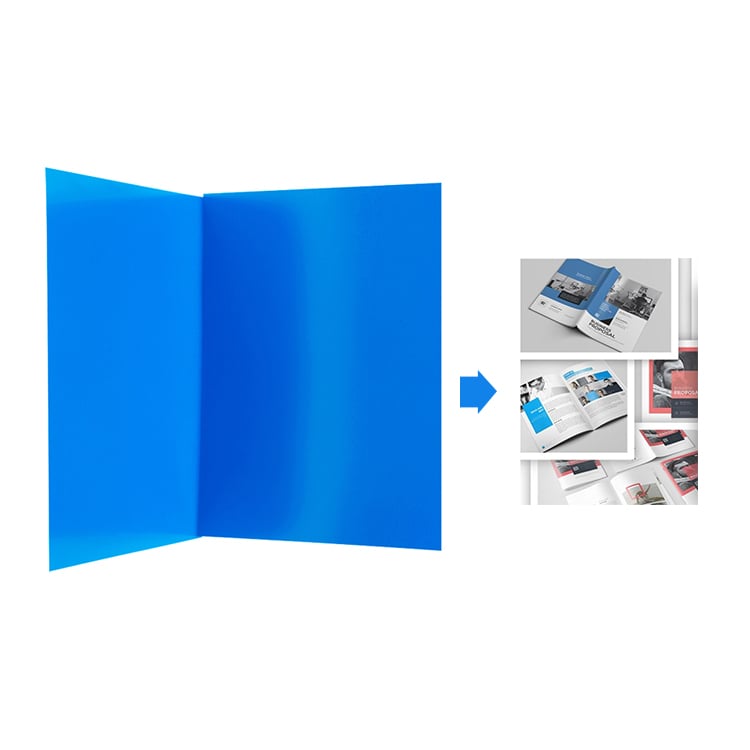
With at least six types of thermal plates entering the market so far, it is necessary to find a way to classify them. In the past, "generation" was often used to distinguish different plates. Industry insiders believe that using the word "generation" is inappropriate. It implies that the "third generation" unprocessed thermal plates will replace the previous "first generation" and "second generation" "Generation" thermal plate, which may not be possible. A better method is to define these plates as negative images, positive images and unprocessed thermal plates respectively.
- Negative image thermal plate
Negative heat-sensitive plates include cross-linked photosensitive polymer plates. On this plate, a laser beam images the printed portion of the printing plate. The thermal laser beam heats the cross-linked photosensitive polymer until it "melts" and does not dissolve during the development process, while the unexposed parts will be dissolved and the imaged part will resist water and accept ink. This process is the same as using negative film to print printing plates, so it is called "negative" thermal plate. Kodak Polygraphics' Thermal 830 plate and Fujifilm's Brillia LH-NI both fall into this category. This kind of plate is only imaged on the external drum plate-setting machine.
The printing performance of the negative plate is amazing. Without drying, the plate can guarantee 250,000 prints. It is reported that a printing factory has printed 700,000 copies without baking the plates. After baking the plates, the printing volume can exceed 2 million copies.
- Positive image thermal plate
The positive heat-sensitive plate is a cross-linked photosensitive polymer plate. On this plate, a laser images the non-printing portion of the plate, and the thermal laser beam breaks down the photopolymer so that the imaged area becomes soluble during development, while the unexposed portion remains insoluble. Since this process is the same as printing a printing plate with positive film, it is called "positive" thermal plate.
The laser beam power required for this type of plate is smaller. This kind of plate is suitable for internal drum plate-making machines. It does not require preheating, but it does need processing. After drying, the printing volume can be increased. Horsell's Electra DC is one of them, in addition to Agfa's ThermalStar 830 and 1064, Fuji's Brillia LH-PI (830nm) and Brillia LH-PG (1064nm), Lastra Extreme 830, Plurimetal Cygnus and Toray CTP Waterless 830. The printing volume of these plates is 150,000-200,000 copies. Electra DC can exceed 1 million copies after baking.
- Unprocessed thermal plates
The untreated heat-sensitive plate consists of an aluminum plate base coated with an ink-receptive layer, a hydrophilic layer and a protective layer. The thermal laser beam melts the printed information into the hydrophilic silicon layer, allowing printing without the need for development. In addition to Presstek producing untreated plates so far, Kodak Polyfluoro will also have products coming out this year. Untreated plates also have two disadvantages. The first is that its hydrophilic layer must be strong enough to achieve high printing volume, which requires this layer to be as thick as possible, but this also increases the difficulty of removing melted impurities. The second is that these plates cannot be baked to increase print yield, because baking the plates will completely burn off the hydrophilic layer, thereby losing the printing information.
Presstek's PearlWel and PearlDry plates have a print run of approximately 20,000 prints, while the new PearlGold plate with a thin hydrophilic layer has a print run of 30,000-40,000 prints. KPG's unprocessed plates should be able to print 50,000 copies.
- Conclusion
Each of these three types of plates has its own characteristics, and in the foreseeable future, all three types of plates will be used. Therefore, thermal plates should be more accurately classified into positive, negative and untreated plates instead of using the easily misunderstood "generation".
Huida Print-All Technology company is an advanced and professional manufacturer of producing printing plates, mainly sales CTP, CTCP, and PS plates as well as offering ODM/OEMs, especially for the offset. For more information, please click the official website link here: https://www.huidaoffsetplate.com/.

